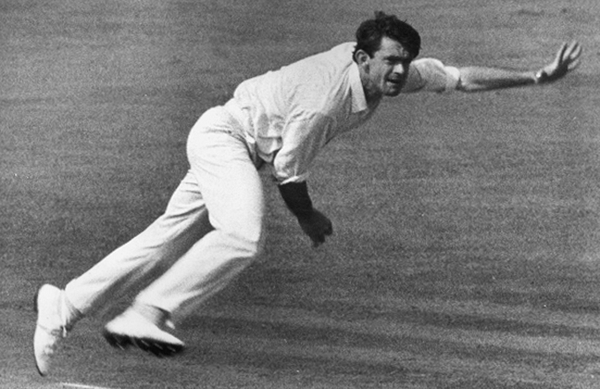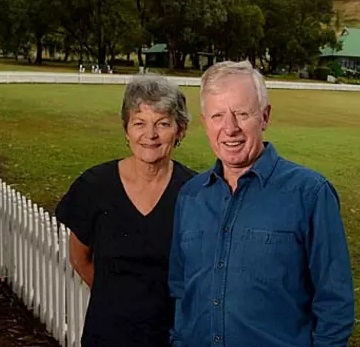Sydney Grade Cricket 50s to 70s - Strong Opponents
John Rogers | July 24, 2023

The period from the 1950s to the 1970s was a heyday of Sydney grade cricket.
Occasionally there were summers with no international cricket at all, so the domestic game was played with great intensity. One-day cricket and Sunday play did not start until the 1967-68 season, so there was less call on the top players. The sports lift-outs of the three Sunday papers gave grade cricket extensive coverage. The two afternoon daily newspapers, The Sun and the Daily Mirror, also covered grade cricket extensively. Articles on grade cricket were read widely, and the sporting public was interested in what Test and state players were doing in domestic cricket.
St George was clearly the team to watch, but Western Suburbs often proved to be the Saints nemesis at finals time. This was particularly so when Alan Davidson turned out for Wests, as he won finals in 59-60 and 63-64 and the 64-65 semi-final almost single-handedly. Each time he had with him a fine state bowler in Les Ellis but Davo’s exploits were telling. Each time St George was missing Brian Booth while Norm O’Neill also missed the 63-64 final as both were on their way to the 1964 Ashes in England. Wally Wellham, Ken Muller, Grahame Corling and Jim De Courcy were the pick of the Wests players in the early 60s. In the late 60s Test skipper Bob Simpson captained effectively and had Gary Gilmour, Brian Rhodes and Stuart Webster as three fine pace bowlers and a dangerous left arm tweaker in Peter Ferguson, while Bob Bartlett was a tough top-order batsman.
Petersham-Marrickville was the other team that was dangerous at finals time. Clive Johnson and Noel Hughes were particularly fine captains. Full of tough seasoned baseballers, a match against Petes always produced a titanic struggle. State baseball catcher Kevin Cantwell let every batsman know a battle was on an opener Max Benjamin was often impossible to shift. The Hughes dynasty was ever-present with Noel and son Graeme both very fine batsman. Ironically, their match winner was often the happy-go-lucky left-arm wrist spinner Johnny Martin who would travel up and down by train overnight from Burrell Creek near Taree. As the era finished Brian Riley arrived to carry on the tradition accompanied by several fine bowlers in Dave Chardon and Greg Hartshorne and future interstate players Ray Phillips and Gary Goodman.
Northern Districts was another tough club, especially with the great Neil Harvey at No 3. Neil Marks and, later, brother Lyn were exceptional cricketers, while Graham Southwell and Mark Hope were fine club batsman. The pace attack of two-metre tall Hartley Anderson and Bill Jocelyn always threatened. Leg-spinners John Phillips and John Blazey were always a challenge. Later Steve Bernard and Mark Clews became a formidable pace attack while state all-rounder Kerry Mackay was often ND’s money-man – often difficult to shift when batting and tough to get away when bowling.
Cumberland under Richie Benaud was always a tough game, especially with Doug Walters and John Benuad in the side. The “katzenjammer” spinning brothers Bob and John Aitken often made life difficult for opposing batsman, while Billy Lothian was a much-underrated opening bowler. Early in the period Mosman under Ian Craig was a fine side. Super-quick Gordon Rorke, NSW keeper Doug Ford and Bob Leatherbarrow with his huge inswingers added strength. Later in the period, former England all-rounder Barry Knight marshalled a fine team that included test paceman David Colley and media personality David Lord, who was an excellent all-rounder.
Gordon under Siddy Carroll and later Dick Guy was always a formidable team. Eddie Walters and Test keeper Brian Taber were fine batsman, while at times it fielded three leggies in Guy, Tony Wilson and John Todd. The Renneberg pace bowling brothers John and Dave made Balmain a quality team, especially when John Gleeson came down from Tamworth to bowl his mystery spinners. Balmain also had a fine all-rounder in Ross Collins, a good left-arm spinner in Johnny Heiler, an exceptional batsman in NSW captain Tony Steele.
Bansktown had a wonderful batsman in Grahame Thomas, and later the pace duo of Jeff Thompson and Len Pascoe arrived to cause consternation in the ranks of all clubs, including St George. Manly had Peter Philpott, Jimmy Burke, Barry Rothwell, terry Lee, Eddie Robinson, Tom Brooks and Gordon Rorke who had transferred from Mosman.
All the other clubs had fine players. Some of the best included left-arm spinner Mike Pawley in his younger days at Sydney University, Rick McCosker, Ian Fisher and Frank Misson at Sydney (Glebe), Geoff Boxsell and Kerry Owen at Waverley and Geoff Davies, a leg-spinning/batsman good enough to be 12th man for Australia, and opening batsman Alan Turner and Ron Crippen at Randwick.
Few clubs were easy-beats with any number of players capable of having a day out. Warren Saunders found this in his first match as captain when ex-St George colt Johnny Cope in his first match for Sydney University scored 123 to enable the students to beat St George outright.









Good bowler and a good person was John W Gleeson.